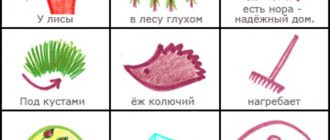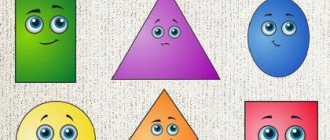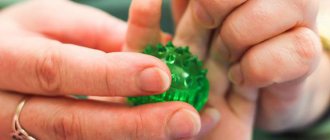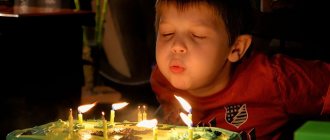Speech plays an important role in the psychological and social development of a child. Violations in this area lead to a slowdown in the formation of cognitive processes, difficulties in mastering the school curriculum, and make the child withdrawn and indecisive.
To minimize the likelihood of such problems occurring, it is necessary to know the methods of speech development in preschool children.
Stages of speech development in children from birth to school
Human speech develops in stages. Its formation begins from birth. Russian psychologist and linguist Alexey Leontiev identified a number of important stages of speech formation that a child goes through: preparatory, pre-school and pre-school.
The preparatory period covers the period of time from birth to one year, it is divided into 3 stages:
- scream _ With its help, the newborn communicates with the people around him. This is the first vocal reaction. The child uses it to tell his mother about his discomfort. Thanks to screaming, articulation, voice, and breathing are trained;
- revelry _ Lasts until six months of age. The baby reproduces certain sounds and their variations (a-gy, boo-oo, a-gu). At this stage, it is important to support the child's desire to communicate. To do this, parents should repeat what the baby says;
- babble _ This stage lasts up to a year. It is the final stage of preparing the baby for full speech. Children begin to pronounce repeated syllables (ma-ma, va-va, ba-ba, yes-da, pa-pa). At first, the child pronounces simple words unconsciously. But by 10-12 months, children begin to meaningfully use “ma-ma”, “ba-ba”, etc.
The pre-school stage begins when infants begin to consciously pronounce their first words. It lasts from 12 months to 3 years. Children's first words are general in nature. For example, “give” can mean a request, a desire, or an object. Therefore, only family members understand the baby for now.
From the age of one and a half years, children begin to pronounce words in full, and not in a truncated form. The lexicon continues to expand. Kids try to put simple words into sentences without prepositions. For example, “Masha am-am” means that Masha is hungry. By the age of three, questions are formulated in speech: “How?”, “Where?”, “Where?”, “When?”.
Children under three years old actively use gestures
The child learns to use prepositions, agree words in case, number, gender. Four-year-old children already communicate using complex and compound sentences. The preschool stage of speech formation lasts from 3 to 7 years. This is a time of active replenishment of the vocabulary.
By the end of the preschool period, children pronounce all sounds correctly and have a broad outlook.
Speech of children 3-4 years old
In 3-4 year olds, speech develops quite quickly. Usually, by the age of three, a child practically masters his native language. The vocabulary of three-year-olds is growing every day: up to 100 new words come into use per month. A four-year-old child already has a vocabulary of about 2 thousand words. In children of this age, the sound design of words becomes better, phrases sound more developed. It should be noted that not all children develop in the same way. Some children have some delay in speech: they speak unclearly, words and individual sounds are pronounced incorrectly. Children often shorten words, skip and rearrange sounds and syllables. The speech of three-year-old children is of the same type and simple. However, even at such an early age, children show interest in words.
Methods of speech development in kindergarten
The theory and methodology of speech development in preschool children has its own characteristics. There are many techniques for teaching kids. One of the most popular is the method of Alekseeva M.M. and Yashina V.I.
The technique involves step-by-step speech training:
- filling the vocabulary;
- correct sound reproduction;
- grammatical construction of sentences;
- training in conducting monologues and dialogues.
In the method of speech development by V.I. Yashina. The following methods are used:
- verbal (carried out through conversations, reading, stories);
- visual (implemented through examination of objects, familiarization with drawings, photographs);
- practical (these are theatrical games, drawing, designing, round dances).
Methods of speech development by Yashina V.I. and Alekseeva M.M. involves the use of such verbal techniques:
- speaking;
- sample of speech communication;
- repetition;
- indication;
- explanation;
- question.
Reading fairy tales and short stories is a great way to improve your vocabulary
Groups in preschool educational institutions are divided into junior, middle and senior. The thoughtful speech of a specialist is used as a role model. To motivate the child to actively communicate, the teacher emphasizes his positive qualities and achievements. It is customary to correct vocabulary errors correctly and accurately.
In younger groups
The method of developing children's speech involves mastering words, understanding their meaning, and association. In younger groups, as a rule, classes are conducted in the form of a game. Memorizing words occurs when studying the world around us, looking at drawings, toys and other objects.
At this time, the teacher pronounces sounds, associating them with a specific object. Auditory exercises alternate with articulation exercises. To train the speech apparatus, the teacher asks the children to smile, stick out their tongue, run it over their upper teeth, and then puff out their cheeks.
The method for three-year-old children is aimed at teaching the correct pronunciation of sounds. Children learn to hear and pronounce consonants and vowels. Children often confuse hissing and dull sounds and miss them.
In kindergartens, deduction games are often played: “Brew tea”, “Guess what they hid”, “Cut salad”, etc. During such activities, the child learns not only to talk, but also to perform actions with objects. Also, the teacher’s task is to create associations for the correct formation of speech. For this purpose, quantity games are played.
In middle and senior groups
In the middle and older groups, a method for comparing and correcting speech disorders is used. Repeated repetition of a verbal element gives the child the opportunity to remember the sound and learn to pronounce it correctly. The teacher explains the essence and meaning of various phenomena and objects. This allows you to remember words faster.
The specialist’s task is to consolidate the acquired skills and form conversational speech in the child. Kids are encouraged to conduct a coherent dialogue, listen and maintain a conversation. Simple lessons on relationships and sentence structure are taught.
To construct morphological speech, the following techniques are used:
- reading literature;
- learning poetry;
- staging theatrical scenes.
Methods of speech development by Starodubova N.A. involves conducting collective training sessions aimed at developing perseverance, assessing speech level, and creative qualities. In middle and senior kindergarten groups, children communicate a lot with their peers, use speech patterns and skills. Participation in games for older children contributes to the rapid development of speech.
But such an association must take place under the control of educators. After all, some older guys can tease and offend kids, laughing at their still unpracticed speech. This negatively affects the development process. Children's vocabulary is replenished through descriptive stories. The methodological system makes it possible to develop imagination and memory.
Games described include:
- examination of the subject;
- highlighting its special features;
- determining the components of an object relative to each other;
- finding small components;
- re-perception.
Six-year-old children should be able to recreate images of things in their memory when answering questions from the teacher. Kids are able to rhyme words, compose simple rhymes, and compose logically meaningful stories.
MAGAZINE Preschooler.RF
Speech development in younger preschoolersThe purposeful development of speech in younger preschoolers is one of the leading areas of pedagogical activity, ensuring the timely mental development of children. Speech is the basis of the human mind, the crown of nature’s creation; from early childhood, human life is connected with language.
In the development of a child’s speech, the leading role is played by adults: the family (parents) and the kindergarten teacher. The child’s success in mastering the language depends on the culture of speech of adults and how they talk to the child, how much time they devote to verbal communication.
Thus, an adult’s speech must comply with the norms of literary language and literary colloquial speech both in terms of the sound aspect (diction, tempo, pronunciation of sounds and words) and in terms of the richness of the vocabulary, accuracy of word use, grammatical correctness and coherence.
The main goal of speech development of young children:
— formation of oral speech and verbal communication skills
Main tasks of speech development:
- formation of a dictionary
- development of sound culture of speech
- development of grammatical structure of speech
- development of coherent speech
- introducing children to fiction.
There are factors that contribute to the development of speech in younger preschoolers. Let's start with a very significant factor - creating a calm atmosphere in the group. The teacher’s tolerant, friendly attitude towards children, sincere respect for each individual’s personality is the key to the formation of favorable relationships between children. It is important for a child to constantly feel that all his efforts and efforts have not gone unnoticed, are supported by adults, that they are happy with him, that everything is working out for him. Therefore, the success of each child (repeated a word, phrase after an adult, said something on his own initiative) should be noticed.
The full development of speech in younger preschoolers is impossible without targeted pedagogical work outside of class. This work involves a variety of games for repetition and consolidation of program content throughout the day, at all moments. They can be carried out either with a small number of children (2-6 people) or with the whole group.
A factor in successful speech acquisition is the reading of poems, folk songs and nursery rhymes by adults.
Children need to read familiar or new works of fiction every day, as well as any other anthologies and books. Numerous collections of literature contain works that will make communication with children at one time or another in the daily routine more meaningful: when washing, eating, while playing, getting ready for bed, while walking.
For example, the nursery rhyme “Okay, okay...” will help start a conversation with the kids about how they spent their weekends or holidays, which of them visited grandma, how grandma greeted them, what she treated them to.
And before charging or when putting on shoes for a walk, you can tell the following nursery rhyme:
Let's count for the first time, How many shoes we have. Shoes, slippers, boots for Natasha and Seryozhka,
And even boots for our Valentine, and these boots for little Galenka.
And after reading, ask the guys: “What kind of shoes do our guys have on their feet?” , the children will begin to answer, if someone is at a loss, you can give a hint, and here you can also ask the question: “What color are your sandals, Masha?” , “Which ones are big or small?” .
When washing your hands, nursery rhymes are required:
“We know, we know - yes, yes, yes...” , “Water, water, wash my face...” , “Hands must be washed clean, Sleeves must not be wet.” , “I’ll wipe my hands with a fluffy towel very quickly!” . In an early age group, such nursery rhymes should be recited with each child with whom you wash your hands.
Rhymes during meals:
It's a spoon! It's a cup! There is buckwheat porridge in a cup. The spoon was in the porridge - The buckwheat porridge is gone!
Here you can ask the children: what kind of porridge do you think is in your plates? Or - what's on your plates?
On a walk: children, using the text of the corresponding nursery rhyme, show how big legs walk (to-o-o-p, to-o-o-p) and small legs run (top-top-top), while the children develop the ability to use (by imitation) the height and strength of the voice.
Next time you can take the doll, cradle it and read V. Berestov’s poem “The Sick Doll” :
Quiet. Quiet. Silence. The poor doll is sick. Sing what she likes and she will get better.
Children begin to sing a song, using not only those learned in the group, but also their home repertoire.
Singing children's and adult songs by the teacher has a wonderful effect on the mood, behavior and development of children.
It is advisable to sing to children and with children a lot and often, without being embarrassed about your performance. Educational psychologists state that children with whom singing teachers work are noticeably different from their peers whose teachers do not sing: they know how to listen to singing, sing along with adults without difficulty and with pleasure.
The teacher’s speech and his ability to talk with children are of great importance. The teacher’s speech should be clear, expressive, and unhurried.
At a young age, the teacher teaches children to understand the question and answer it. But if for some reason the child is silent and the pause drags on, you need to suggest an answer, repeat it with the children, and after some time ask the child the same question again.
It is known that children are very easy to suggest something to. It is worth remembering this feature when teaching children. (“Anya will succeed... Vova will be able to... Alyosha will think now and will certainly find the right picture (toy)...", etc.).
Any conversation with children should be businesslike, thorough, and the teacher’s interest in what the child says and does should be “seriously interested.” Children unmistakably react to the teacher’s mood, intonation, and gestures. And if the teacher sincerely, with pleasure “blows on hot pancakes and eats them”, shows how goats butt, the child not only becomes infected with the desire to do the same, but strives to do it very well, with good humor.
Also in classes on speech development you need to use the following techniques:
- Alternating various techniques - such as explanation, indication and demonstration with game tasks. For example:
The teacher tells the children: “Aw-aw-aw,” the dog barks. How does she bark? After the children pronounce the onomatopoeia, the teacher continues: “Now we will play wind-up dogs. The dog that I turn on with the key (makes an imitation movement) should bark: aw-aw-aw.”
- A combination of children's choral responses with individual ones.
Typically one choral response is combined with 3-4 or more individual responses. This significantly increases the density of the lesson, helps to involve all children in the work, and also to find out which of the kids has not mastered the skill being mastered in order to further explain or show something (in class).
- Using a variety of demonstration materials (objects, toys, pictures, tabletop theater figures, etc.). Looking at them maintains children's attention, increases speech activity, and develops the ability to generalize.
- Using tasks aimed at giving children the opportunity to change their position and move around (for example, approach the teacher to look at something with him; look under the chairs to find where the little kitty hid; depict little goats butting, pecking grains chickens, etc.). In some cases, these tasks simultaneously pursue the goal of teaching children the ability to accept an imaginary situation: bake pancakes, catch a snowflake and blow it away. When completing such tasks, children learn the game actions necessary for independent role-playing games.
Techniques for enriching and clarifying vocabulary that help a child hear a new word in the speech of adults, understand its meaning and remember it include the following.
- Display with naming. When developing a child’s speech, you need to take care not so much that he pronounces as many words as possible, but that the words he hears and pronounces are filled with living images and specific content. Therefore, when introducing children to a new object, it is necessary to carefully examine it together with them, tell it its name, and, if possible, examine it. For example, it’s easier to see a tower and a tower in pictures, but it’s better to touch a tower or a box, or even better to try it on.
- Repeating a new word or phrase over and over again. (“This is a tomato. What is it?” says the teacher, showing the vegetable. “Tomato,” the children answer in chorus and individually. “I have in my right hand... (a tomato). And in my left hand there is also a tomato. And now there is only one left tomato".)
- Explanation of the origin of the word. The technique encourages children to listen to the sound of the word and rejoice at the guess. (“Frog frog. Why croak? Why mouse mouse?”)
- Adults use a new word in combination with words familiar to children. (“Pecks. The chicken pecks. She has a beak. And the chickens have beaks. And the chickens peck. They peck at the grains. The chicken pecks quickly, and the chickens try to peck quickly.”)
- Instructions requiring a response with action. (“Find...”, “Bring...”, “Show...”, “Give...”, “Do...”) Motor responses may show that the baby has begun to master the material, although this has not yet been reflected in active speech.
Techniques for activating the dictionary include the following.
- Questions. Children are asked questions about objects both in a simple form: “Who?”, “What?”, and in a more complex form: “What are they wearing?”, “What is they carrying?”, “Who sews what?”, “What does he use to clean them?” ? and so on.
Children should ask questions not only about actions currently being performed (What are you doing? What are the children doing in the picture?), but also about actions that have been performed previously or will be performed. This helps kids learn the relationships and sequence of actions that characterize the situation as a whole.
Children begin to use phrasal speech more actively when they try to think about the questions: “Why?”, “Why?”, “When?”, “How?”. And although such questions are difficult for children of this age, nevertheless, the teacher should use them more often, because the child begins to understand the real relationships between objects earlier than he learns to reflect them in speech.
- Didactic games and exercises involving the use of words belonging to different parts of speech. For example, children explain who voices what (croaks, quacks, meows), what can be done with scissors, a net, a brush; guess what has changed. (“Katya hid behind the house”; “A lot of mushrooms grew”; “Run away far”, etc.) When carrying out such exercises, a variety of pictures, objects, and toys are used.
- Children's finishing of words. This technique is used when repeating familiar fairy tales and nursery rhymes. It is also used when writing stories together with children on everyday and other topics. For example, the teacher begins to talk. Without finishing a sentence, he asks the children a question. The child’s most successful answer forms the basis of the next phrase. (“Murka wanted to eat. Murka went to Katya. Katenka gave Murka... what did she give? (Milk.) Katya poured the milk... where? into what? (into a saucer.) And so on.)
- A combination of demonstration and explanation with children's play. In the first part of the lesson, the teacher demonstrates a performance using toys. Then invites the children to play with them (each child is given a set of toys or one of them). While playing, the child uses words and phrases that he heard from an adult.
- Instructions that require the child to make a detailed statement. This technique is used in a variety of performances. (“Kitsonka, don’t leave us. We love you. We’ll give you milk and give you a sausage.”) Instructions should be widely used outside of class. (“Sasha, ask Anna Ivanovna: “Anna Ivanovna, please take out the matryoshka doll. I can’t do it myself - it’s high up”; Zhenya, tell Katya: “Katenka, I brought you an interesting book”).
Work on clarifying and consolidating the correct sound pronunciation begins with vowel sounds (a, u, i, o) and consonants that are simple in articulation (m, p, b, f, v, etc.), despite the fact that most children of this age can pronounce them correctly. Only hissing (zh, sh, ch, sch) and sonorant (r, l) sounds, which are the most difficult to pronounce, are excluded.
When teaching children the correct pronunciation of sounds that are simple in articulation, diction is simultaneously practiced. Clarification and consolidation of sounds has several stages. First, children pronounce an isolated sound and simple sound combinations. In this case, onomatopoeia is most often used. When introducing a child to a sound or sound combination, it is necessary to associate it with a certain image (oo-oo-oo - the steam locomotive is humming, knock-knock-knock - the hammer is knocking, ha-ha-ha - the goose is screaming, etc.).
At subsequent stages, sounds are fixed in words. At the same time, it is important to monitor not only the correct pronunciation of sounds by children, but also the clarity and intelligibility of the pronunciation of words (isolated and included in a sentence).
There are also tasks for protracted and prolonged pronunciation of sounds (for example, children are asked to sing a “long” song: oo-oo-oo-oo - that’s how the locomotive honks. How does it honk? (choral answer), and now let’s listen to how Sasha’s locomotive honks , Colin, Machine, etc.)
A variety of simulation exercises involving listening to poems and short stories (Russian folk songs “Tili-bom” , “Zainka, come...” , “Ladushki, ladushki...” , etc.). A word in combination with a gesture is extremely important in the development of speech and mental activity: the gesture fills the word with specific content. (example)
Sensory education and development are also of great importance in the development of a child’s speech. The child draws his first ideas about the world around him, the material environment, with the help of various analyzers, while the word consolidates the ideas received through sensory means. For kids, words really are the “second originals of reality ,” the first being the images of the world around them, that is, language develops in a visually effective way. For a child to understand a name, he must see the object with which it is associated.
Sensory and speech development occur in close unity, therefore, the work on speech development cannot be separated from the work on the development of the senses and perception.
By becoming familiar with color, shape and size, the child enriches his vocabulary, sound analysis of speech, ear for music, and so on. For example, the game “What color” . Give children pictures depicting various objects, fruits, vegetables (green - cucumber, red - flag, red - strawberry, yellow - lemon, and so on). Then show a square of a certain color and the children who have an object of that color raise their pictures. This is how we get acquainted with color and reinforce the names of objects and enrich the children’s vocabulary.
In conclusion, I will say that a child cannot master speech on his own. Only with the constant attention of parents and preschool institutions to the organization of the child’s speech activity can positive results be achieved in the development of his speech.
One of the necessary qualities of full-fledged oral speech is the correct pronunciation of all speech sounds. Most children master this correct sound pronunciation in preschool age, and this happens without any special training, based on imitation of the correct speech of the people around them.
| Next > |
Ushakova's technique
Ushakova’s method for developing the speech of preschool children is quite well-known and effective. It is based on the assimilation of simple material and elementary techniques, followed by a transition to more difficult classes.
Complicating tasks for the baby is carried out gradually and imperceptibly. After just four lessons you can see positive results in speech development.
Parents play a major role in the development of a baby’s speech, so mothers are given the following recommendations:
- talk to your child correctly;
- ask the baby to repeat simple words;
- during the game, name objects;
- regularly tell fairy tales, read children’s books aloud;
- If the child pronounces words incorrectly, try to correct the mistakes.
Ushakova’s technique involves an individual approach. When developing the program, the health characteristics, genetics, level of development, age of the baby, his skills and abilities are taken into account.
Speech exercises
To develop speech, it is recommended to perform special exercises. Classes can be conducted in the form of a game to interest the child.
Effective speech exercises:
- searching for an item. At least three toys are placed in front of the baby. They ask him to turn away and at that moment they hide one of the things. Then the adult offers to name and describe what item is missing;
- comparison of pictures. Show your child a drawing of animals. Ask him to conduct an analysis. For example, a giraffe is big and a dog is small;
- imitation of the voices of birds and animals;
- memorizing tongue twisters, pure tongue twisters;
- names of objects in singular and plural;
- description of a fairy tale from a picture;
- search for words starting with the given letter;
- rhyming words.
The origins of speech development techniques
Issues of speech development can be traced in the works of scientists and philosophers of Antiquity. During this period, the foundations of speech development methods are born.
In ancient times, several aspects can be identified that laid the foundation for the emergence of speech development methods:
- Introduction of Solon's laws in Ancient Greece. They were associated with the development of oratory and speech. Everyone could speak in their own defense in court, which required the development of certain speech skills;
- Aristotle's works on the topic of speech development. Aristotle studied the analysis of language, speech, and its expressiveness among speakers. He said that speech should be clear and expressive, so that its meaning is conveyed to the listeners and it achieves its intended purpose;
- Development of oratory by Cicero. Cicero became an outstanding Roman orator. His speeches were widely known and not only the Romans gathered at them: they came from other settlements and states;
- Works of Socrates on the development of rhetorical skills. Socrates developed recommendations for developing children's skills of expressive pronunciation and constructing clear and precise speech.
Are you an expert in this subject area? We invite you to become the author of the Directory Working Conditions









